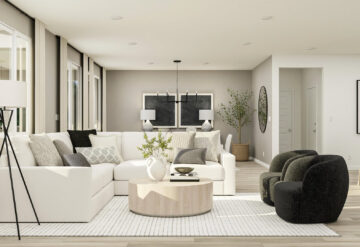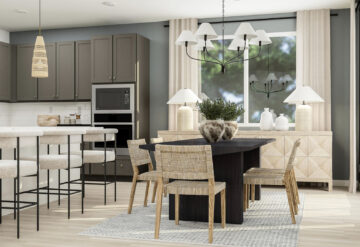Although the adoption of Smart Home devices continues to rise, some consumers are still confused about the many benefits and myths of home automation. Learn about five common smart home myths in this Forbes article by Mark N. Vena.
Given the strong response to my recent Forbes column about the myths of cord-cutting, I decided to write a similar piece about some of the consumer misconceptions surrounding the smart home. Taking the smart home plunge can be a daunting task, and in some ways, the challenges are even more formidable than cutting the cord. Hopefully, this article will provide some helpful guidance for those considering implementing smart capabilities within their home.
A few notes before we dive in: the phrase “smart home” is a confusing catch-all phrase for the automation of a wide variety of mundane and repetitious chores that consumers perform at home. But just because a product claims that it is “smart” doesn’t mean there aren’t a number of critical considerations consumers should ponder before making a purchase. Without further ado, here are my thoughts on five common misconceptions consumers have about a typical smart home implementation.
Myth #1: Smart home solutions are probably NOT going to save you major bucks
Many consumers have high expectations that their smart home solutions will save them money—however, this may be unrealistic. That is not to say that installing a smart thermostat like Nest or installing smart blinds to help cool your home won’t cut down on your monthly electricity bills; just that those savings are likely to be relatively modest. An excellent recent piece by Beth DeCarbo in the Wall Street Journal contends that the smart home may not save consumers significant money in the long run. According to Florida-based Simply Self Storage, the average annual savings for the most popular smart devices and appliances is less than $600 combined—hardly a major windfall. On the bright side, Zillow reports that homes with smart appliances sell for nearly 23% more than comparably sized properties in the same zip code.
Myth #2: Smartphone apps are the chief means of controlling the smart home
While smartphone apps are certainly important, the sheer complexity and breadth of functions/devices many people ultimately implement in their smart home can become quite awkward and cumbersome to control via smartphone. For example, when you have an armful of groceries the last thing you want is to have to pull your phone out of your pocket and fumble for the right app to unlock the smart lock on your front door.
Voice assistants are exceedingly easy and convenient to use, and they typically play a bigger role in controlling the smart home. However, the brand choice you make is extremely important. Since Google GOOGL +0% Assistant and AmazonAMZN +0% Alexa have slightly different ways to initiate activation, it’s wise to standardize on one or the other in your home. That way you don’t have to pause and think about which phrase to use to turn on your lights or unlock your door.
Myth #3: The first thing you should automate are “convenience” functions like lights and door locks
I will probably get a lot of flak for this, but my suggestions for which “smart” functions to implement first are generally not smart lights or comparable popular functions. Sure, controlling and managing your lights via smart home switches like Wemo is cool and provides incredible convenience when controlled with a digital assistance solution like Amazon Alexa or Google Home. However, there are less flashy smart home solutions, like the Phyn Smart Water Assistant from Belkin, with the potential to save some actual money. This affordable ($299 MSRP) do-it-yourself product can help you conserve water and detect leakage in the plumbing under your sink before it causes major damage in your home. Another “low hanging” function worth automating is your analog thermostat, with the popular Google Nest or Ecobee being among the best and easiest solutions to intelligently manage the temperature in your home.
Myth #4: I should automate every light in my home
Lights are some of the most challenging functions to control in the average consumer home. Since even the newest homes, for the most part, control their lights with wall switches or switch banks, automating this capability can be costly and complex. I recommend that consumers take a “walk before you run” approach, and begin by automating simple floor lamps or desk lamps. This lets users get familiar with the pairing process of adding a light or two. From there, users can graduate to more challenging lighting situations (i.e. recessed ceiling lights). I’m a big fan of replacement wall switch products like Lutron’s Caseta line, which are compatible with Amazon Alexa, Apple AAPL +0%Siri, and Google Assistant. Try to avoid replacing your recessed lights with “smart” lights/bulbs; in my experience, the task is cumbersome and it’s less complex to control and manage your lights from a smart wall panel switch.
Continue Reading the Full Article HERE.
POST WRITTEN BY: Mark N. Vena
Mark N. Vena is a Moor Insights & Strategy senior analyst covering the smart home, home automation, security, and console gaming.




